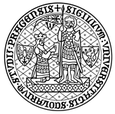Our research focuses on molecular mechanisms by which protein function can be regulated. In particular, we are interested in 14-3-3 proteins and their complexes with proteins involved in apoptosis, cancer, G-protein and calcium-triggered signaling pathways. We employ integrated structural and biophysical approaches (fluorescence spectroscopy, analytical ultracentrifugation, SAXS, mass spectrometry, X-ray crystallography, NMR, cryo-EM, protein structure modeling, functional assays etc.) to understand the details of how the activity and function of protein complexes are regulated.
Current Projects · Previous Projects · Structures solved by our group
Current Projects
Characterization of the interaction between p53 and FOXO4
Transcription factor p53 protects cells against tumorigenesis when subjected to various cellular stresses. Under these conditions, p53 interacts with transcription factor Forkhead box O (FOXO) 4, thereby inducing cellular senescence by upregulating the transcription of senescence-associated protein p21. Cellular senescence induces permanent cell cycle arrest and the secretion of interleukins, inflammatory cytokines, and growth factors. The resulting adverse effects on the cellular microenvironment contribute to aging and to the onset of age-related diseases such as tumorigenesis. Numerous studies have suggested links between FOXOs and p53, but the structural details of their interaction remain mostly unclear. In this project we aim to characterize the interaction between p53 and FOXO4 using various biophysical approaches including NMR, chemical cross-linking, analytical ultracentrifugation and molecular modeling.
Structural basis of ASK1 regulation
Protein kinase ASK1, a member of the mitogen-activated protein kinase kinase kinase family, activates JNK and p38 MAP kinase signaling pathways in response to various stress stimuli, including oxidative stress, endoplasmic reticulum stress, and calcium ion influx . ASK1 plays a key role in the pathogenesis of multiple diseases including cancer, neurodegeneration and cardiovascular diseases and is considered as a promising therapeutic target. The activity of ASK1 is regulated by several other proteins including thioredoxin and the 14-3-3 protein that both function as physiological inhibitors of ASK1. Main goal of this project is to elucidate structural basis of ASK1 regulation.
Molecular basis of regulation of cyclin-dependent kinase CDK16 by 14-3-3 proteins
CDK16 is an atypical cyclin-dependent kinase that regulates various cellular and physiological processes, including cancer cell proliferation. CDK16 is activated by binding to a complex of phosphorylated cyclin Y (pCCNY) with 14-3-3 proteins. Thus, CDK16 activation is distinctly different from other CDKs and is not yet fully understood. Additionally, CDK16 also directly interacts with 14-3-3 proteins, although the function of this interaction is unknown. The objective of this project is to decipher the molecular mechanism of CDK16 regulation and the role of 14-3-3 proteins in it.
Previous Projects
Structures solved by our group
The structures are available in the PDB database - link

